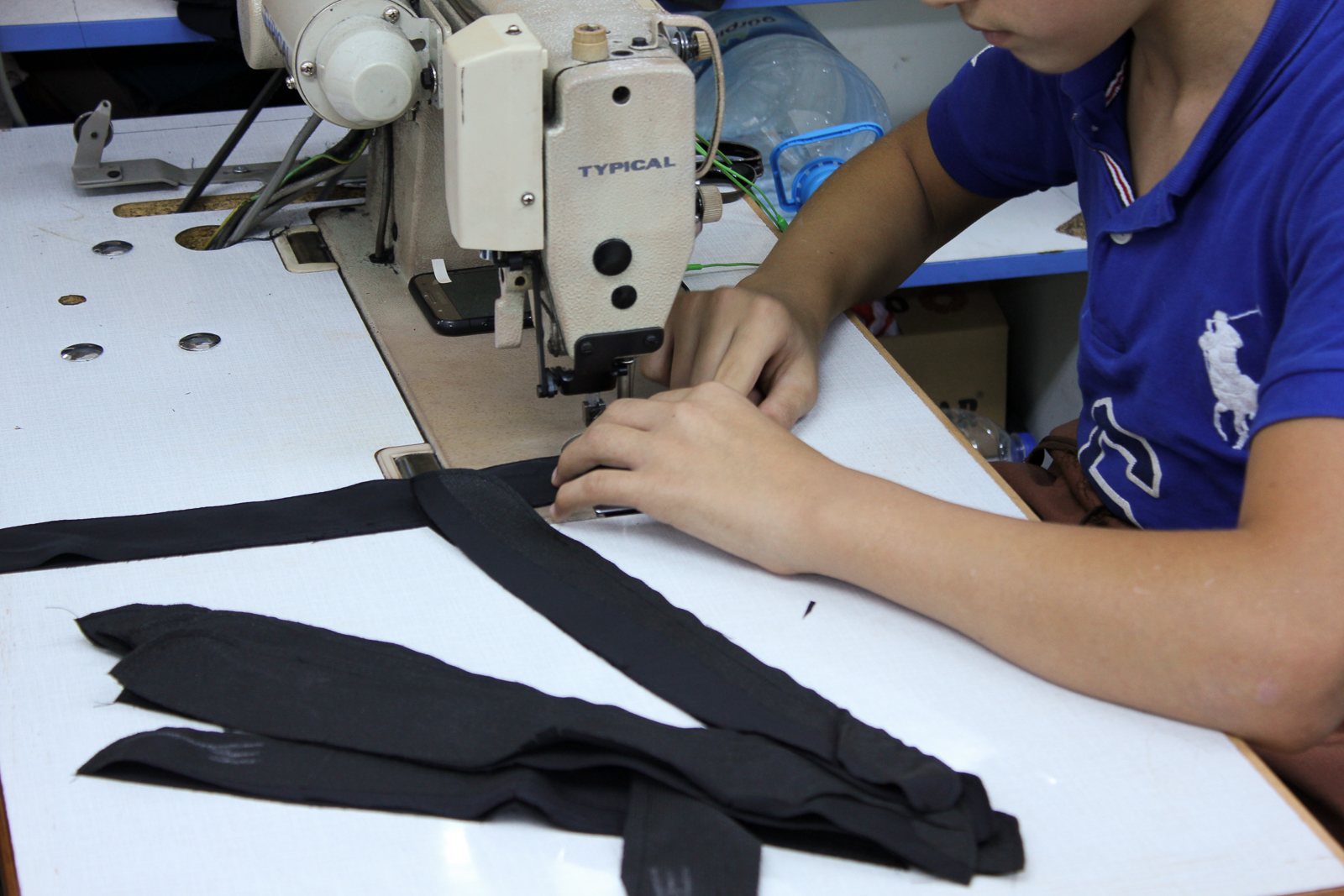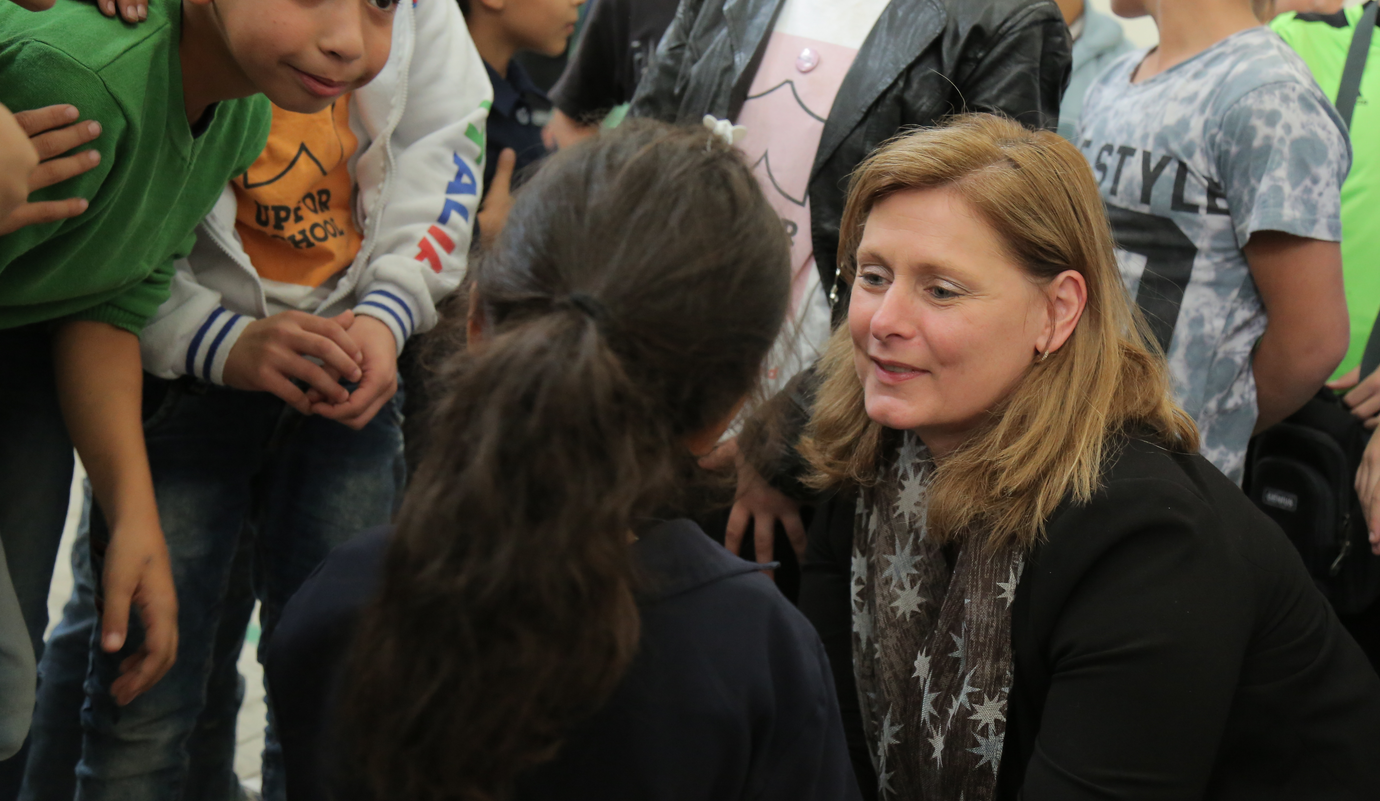
Tanzania struggles to get child labourers out of gold mines and into school
Barriers to education, Child labour, Right to education
A third of Tanzania's children are working as child labourers - and several charities are striving hard to get those employed in gold mines to go back to education.
Three years ago, 14-year-old Julius left his family near the lakeside city of Mwanza, Tanzania, to try his luck mining gold.
Today Julius is in no hurry to leave, despite having one of the riskiest jobs on a chaotic mine site – handling mercury each day with his bare hands.
“It’s good work. I’m paid well,” Julius, who only wanted to use his first name, told the Thomson Reuters Foundation, wearing an orange T-shirt and skinny jeans coated with red dirt.
Julius, now 17, said he has been working with mercury for three years – but no one had ever told him it was dangerous.
There are more than four million child labourers in Tanzania aged between five and 17, according to a government survey released last year in conjunction with the International Labour Organization. That’s roughly a third of the country’s children.
More than three million are doing hazardous jobs, including at illegal mines like the one near Nyaligongo in northern Tanzania where they are exposed to mercury, heavy dust and work long shifts without safety gear.
The Tanzanian government is aware of the problem but has struggled to keep children out of small, unlicensed mines.
Its laws do not allow children under 14 to work and hazardous work is not permitted for children over 14. Tanzania has signed all major international conventions on child labour and introduced its own laws to prevent the worst child labour.
But not everyone knows of the child labour laws, including families and local officials.
Government workers tasked with enforcing the laws lack the staff and funds for inspections, let alone pursue prosecutions.
“In Tanzania we have a good law and strategy to eliminate all kinds of child labour, but the problem here is who is going to implement this at the local level?” said Gerald Ng’ong’a, executive director of Rafiki Social Development Organization
(SDO), an NGO that works on child labour in northern Tanzania.
“Local officials don’t have enough information about the law and how to protect children.”

In Lake Victoria’s gold belt, where gold has been extracted since the 1890s, licensed and unlicensed small mines operate with major mining firms close by.
The scrappy “artisanal” mines provide a crucial source of income to people outside Tanzania’s cities, but like the mining site at Nyaligongo, many operate without government licences.
The majority of children working in gold mines are employed by individuals running these unlicensed mines, observers say. They are among the worst exploited of the mines’ workers, typically earning the equivalent of about $1 a day.
“Pit owners employ children because they’re cheap labour,” said Ng’ong’a.
Legal or not, the lure of the mines – and the harsh poverty of the farming communities around them – keep children coming.
Brothers Petromos and Mayalamos, who are 12 and 16, left their village outside Mwanza because they heard there was good money to be made at this mine.
“The work is difficult,” said Mayalamos. “But I can only leave this place once I’ve earned enough.”
Nyaligongo village relies on gold to survive. On the village’s main street, cramped shops sell vegetables, SIM cards and lunch to off-duty miners. Middlemen purchase gold from miners to sell in the closest town, Kahama, where it is sold on in bigger cities like Mwanza and Dar es Salaam.
At the primary school down the road, teachers are less impressed with mining’s promise of a good future.
I feel very frustrated when children leave and go to the mines instead of going on to secondary school Mabula Kafuku, education officer for Nyaligongo ward
A poster on the school office wall is a testament to the number of children who leave to work when they are old enough. This year, in Class 1, there are 236 students aged six and seven while in Class 7 there are only 40 students aged 13 and 14.
“I feel very frustrated when children leave and go to the mines instead of going on to secondary school,” said Mabula Kafuku, the education officer for the ward. “They don’t even have enough knowledge to mine safely.”
Children dropping out of school is a nationwide problem in Tanzania and major impediment to the government’s aspiration to become a middle-income nation by 2025. A recent Human Rights Watch report found in 2016, more than five million children aged between 7 and 17 were out of school across the country.
For government workers tasked with inspecting mines for health, safety and labour violations, enforcing the law at the far-flung informal mines sprinkled around the Lake Victoria region is an onerous task.
Masasila, the village secretary, cannot recall ever seeing inspectors at the mining site near Nyaligongo.
“If you have children working in remote areas, you need a budget to visit. We don’t have such things,” said Hadija Hersi, a regional labour officer based in Mwanza.
“That’s why you have NGOs stepping in to intervene.”
Indeed, several non-governmental organisations, including Terre des Hommes Netherlands, have been trying to get child workers back in school and help families develop alternate income sources to wean them off their wages.
Since 2014, Terre des Hommes Netherlands, working with Rafiki SDO, has managed to help more than 725 children leave the mines. In Geita, another nearby gold mining area, UK-based Plan International has helped 12,000 children withdraw from small-scale mining work and is trying to reach another 11,600.
But as long as people are struggling to find work outside Tanzania’s cities, there is only so much NGOs can do.
At the mine, Nyanjige Mwendesha looks on as her three children, ages 10, 12 and 15, sit on the red dusty ground, smashing up rocks with small metal hammers in the midday sun.
Mwendesha brought her family to work here after there wasn’t enough rain on her farm this year. The family needed the money.
“When it starts to rain, I’ll go back to the farm,” she said.
More news

“Education can help to end child trafficking”
